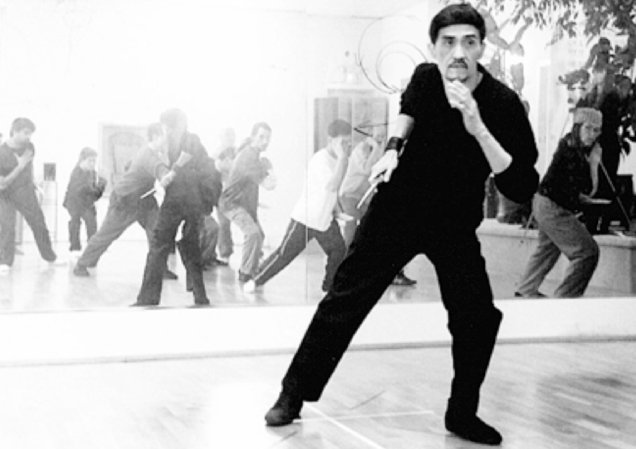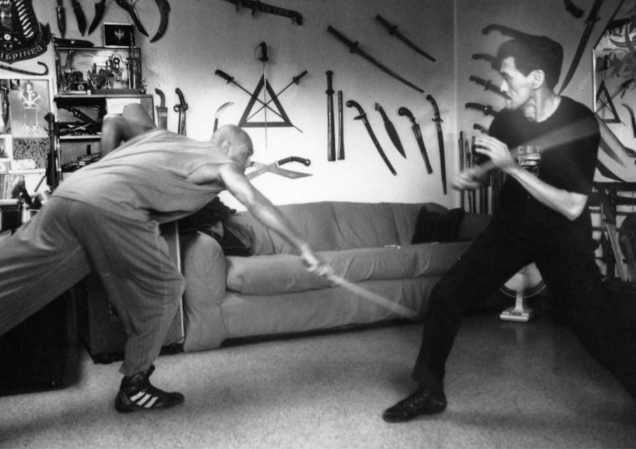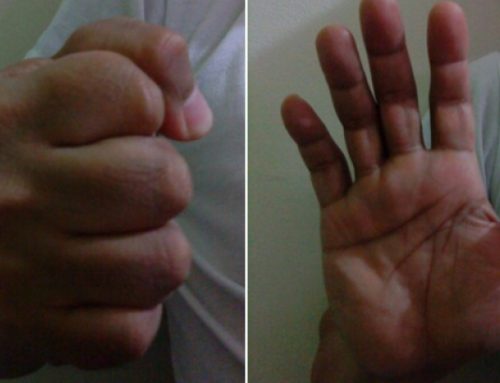Bruce Lee is often quoted saying “Absorb what is useful, discard what is not and add what is uniquely yours.”In Filipino martial arts, many strive for their own sense of self-expression while at the same time, develop the craft in the hopes of reaching its full potential.
This article will explore the life of a man who has accomplished both and has drawn comparisons to Bruce Lee himself.
Maestro Sonny Umpad is the creator of his own style of Filipino martial arts called the Visayan Style Corto Kadena Largo Mano Escrima, which he developed in the 1970s.
The creation of his art and his contributions to Filipino martial arts are best illustrated through the words of two of his finest students, Jay Jasper Pugao and Guro Gregory Manalo.
When asked what made Sonny’s art different from other Filipino martial arts, they said that it’s his innovation of the pendulum.
“The pendulum is a training tool that builds on timing and footwork. It’s a string with a ball of weight at the end and you train with it by moving back and forth,” explained Pugao.
The way Sonny would train with it was all the way down to your feet and you would adjust it to certain levels, ankles, knees, hips and to eye level as well, he added.
“So basically as a training tool, you could train with it by yourself as a give-and-take so you don’t have to have a partner.” said Manalo.
When asked what the pendulum teaches an individual, he said: “You learn to strike going in and strike going out. But it also teaches how and when to enter and how and when to exit and that translates to partners, too. So once you eliminate the training tool of pendulum, both training partners can do the pendulum together. That allows us to gain spatial awareness, sensitivity, range and familiarity with body angulation. So it really trains your eyes to see timing and range. It’s simple enough and it is but it can take a life- time to master.”
According to the two, Sonny brought in the pendulum and the footwork to allow a martial artist to randomly flow in a 3 dimensional range.
“Being able to measure and identify what’s short range, what’s middle range and what’s long range was I think that was one of his biggest contributions to the Filipino Arts.” Pugao said.
“What strictly made him different was his footwork not only as a dancer but also the influence of his Muslim friends teaching him the Moro footwork,” Manalo added.
Aside from the pendulum, Sonny also contributed other things that were not properly recognized. His use of doblecada or double sticks was different because it involves attacking swiftly using smaller motions.
“His double stick strikes, particularly around his fulcrum, utilizes power and acceleration without having to make a really big movements,” Pugao explained.
Unbeknownst to many, Maestro Sonny Umpad was known to many in the Filipino Martial Arts community as “Bruce Lee with weapons.”
Jay Jasper Pugao explains the origin of this title stating that Jesse Glover (a student of Bruce) “…was very intrigued by Sonny’s art form and asked if he could flow with him.”
Pugao further explained that while Glover and Umpad were traveling and training together, Glover created a flyer on their way to Germany which “on the bottom had Jesse Glover’s name which stated ‘Bruce Lee with weapons.’ ” This flyer proudly hangs in Sonny’s house.
When asked to explain how Sonny was like Bruce, both drew similarities that are not very well known.
Gregory Manalo explained: “Bruce Lee was a cha cha champion in ballroom, Sonny was a hustle dance champion in ballroom. Now the correlation of them being danc- ers does play a role because a dancer you have to be a good partner es- pecially as a lead. Bruce Lee was smooth on his feet and so was Sonny. I think that’s what gives Sonny the look that he may look like Bruce Lee; he’s smooth and elusive. And Sonny was known to be a ghost, meaning he’d be in one place but you can’t hit him.”
With the innovations of the pendulum and fulcrum strikes, one would believe that Maestro Umpad would have wanted to keep findings exclusive to his students.
However, Pugao explains that Umpad had a belief that was as unique as his training methods. “Sonny’s belief was, if we can utilize this to help other people develop what they already have, then use it,” he said.

When asked why Umpad was so open to share his concepts with other styles, Pugao explained, “If we introduce the pendulum, the footwork to other martial arts, specifically the Filipino martial arts, we see it similarly as to how capoeira has the jenga.
If you have different capoeristas from different styles but they know the jenga, they can flow with each other.
And then you can have guys from Eskabo, Doce Pares, Visayas all doing the pendulum together but all utilizing their own spe- cific style.
And I think that is a success for me as an instructor because it’s bigger than my style is the best. The bigger picture is how can we unite the Filipino arts? How can we bring everyone on the same page and promote the culture?”
Outside of FMA, both men agreed that they have gained more much more from Maestro Umpad aside from techniques.
“He was someone that really helped me find who I was and all of a sudden it wasn’t learning marital arts it was learning my culture, “ explained Pugao.
“He was able to give us the lessons that we needed in martial arts that we were able to translate philosophically and spiritually in our lives such as the pendulum, give and take,” added Manalo.
Maestro Sonny Umpad is just one example of how Filipino Martial Arts teaches us more than just weapons and strikes.
What began as a means to defend one’s land from invaders is now a means of preserving one’s culture from extinction, helping Filipinos and Filipino-Americans alike become closer to their identities.
Though he would never be able to see the true effect of his work, there is no doubt that Maestro Sonny Umpad has left behind an art that will last for generations to come.





















